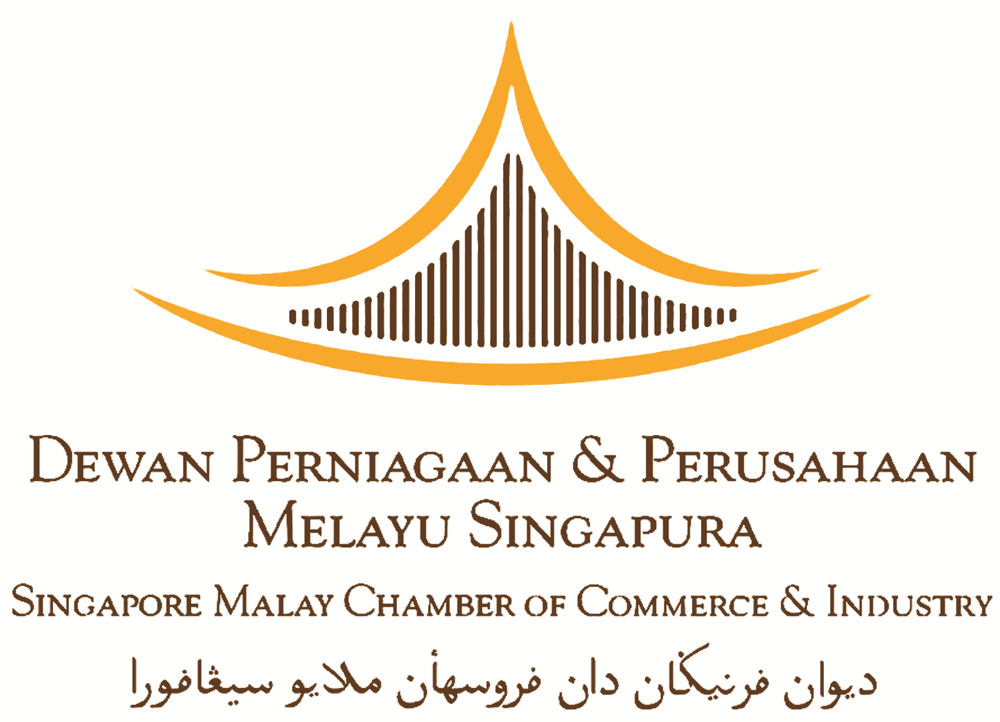- Real CBS Makeovers: 3 Case Studies of SME Owners Who Turned Bad Credit Around
- Ask SmartLend: Why Did My SME Loan Get Rejected?
- Introducing SmartLend Concierge: A Helping Hand for SME Loans
- Legal Ways to Lighten Your Company’s Tax Burden in Singapore
- A Wake-Up Call on Director Duties: The Envy Saga and Other Cautionary Tales in Singapore
- Surviving Cash Flow Crunch: How SMEs Can Use Short-Term Financing Wisely
- Unmasking Business Loan Fraud: How Syndicates and Rogue Brokers Game Singapore’s Lending System—and How AI Can Stop Them
- From Rejection to $60K Approval in 3 Days: How a Fishing Pond Business Got Funded Despite a Flawed Credit Report
- Lender Spotlight: How Poss Capital and SmartLend Partnered For Singapore SMEs
- Which Lender is Right for Your Business in 2025? Banks, Money Lenders, or Alternative Finance
Comprehensive Guide To Progressive Wage Model

Introduction
As a Singaporean SMEs, you may be familiar with the Progressive Wage Model (PWM) and its influence on the local labour. This detailed explanation will explain what PWM is, how it works, and how it helps businesses and people. We'll also give detailed guidance for SMEs interested in implementing the PWM.
As of 2021, around 1,900 companies in Singapore have been accredited for uplifting lower-wage workers through the Progressive Wage Model (PWM). In the food services industry, entry-level local workers must be paid at least S$1,750 under the PWM. Recently, the PWM has also been extended to the waste sector, with up to 3,000 local workers set to benefit from the scheme. By adopting the PWM, businesses can not only improve the lives of their workers but also enhance their workforce quality and productivity.
The PWM is a wage system that aims to increase the pay of low-wage workers in a progressive and sustainable manner. It was first introduced in Singapore in 2012, targeting specific sectors such as cleaning, security, and landscaping. The PWM has since expanded to include other sectors such as F&B, retail, and logistics.
It will cover around 41,000 full- and part-time local food service workers, including chefs, kitchen helpers, and waiters. Of these, 17,000 are low-wage labourers.
Approximately 12,000 full-time lower-paid local workers will have their salary increased to at least the entry-level PWM wage of S$1,750. This will grow by S$165 every year until it reaches S$2,080 in 2025, a 19% increase over the three-year period.
How Does Progressive Wage Model Work?
The PWM works by setting clear wage standards and career progression pathways for workers in specific sectors. These standards are developed by tripartite committees consisting of representatives from the government, employers, and unions. The committees conduct research on the sector’s wage levels and job requirements, and then recommend minimum wage levels and skills training programs.
For example, in the cleaning sector, the PWM has three different levels: Basic, Skilled, and Specialist. A worker who starts as a Basic cleaner will receive a minimum monthly wage of $1,400. After completing training and gaining experience, they can move up to the Skilled level with a minimum wage of $1,600. Finally, after further training and experience, they can reach the Specialist level with a minimum wage of $1,800.
To ensure compliance with the PWM, companies are required to pay their workers at least the minimum monthly wage for their respective levels. Companies that fail to do so may face penalties and be barred from government contracts. The government also provides funding and support for companies to implement the PWM, such as through grants and training programs.
Read also: Minimum Wage VS Progressive Wage Model – Is There a Point in Comparing Them?
What Are The Benefits of Progressive Wage Model?
The PWM has several benefits for businesses and employees. For businesses, the PWM helps to improve the quality of their workforce and increase productivity. By providing workers with clear career progression pathways and skills training, companies can ensure that their workers are motivated and capable of delivering high-quality work.
Additionally, the PWM helps to reduce turnover and recruitment costs. With clear career progression pathways and higher wages, workers are more likely to stay with their employers and contribute to the company’s growth. This reduces the need for constant recruitment and training of new workers, which can be costly and time-consuming.
Will Companies Circumvent The Progressive Wage Model?
One concern about the PWM is that companies may circumvent the system by constantly cycling through employees, firing and re-hiring them to avoid paying the higher wages. However, the government has taken steps to address this issue.
From March 1, 2023, businesses will need to apply for the Progressive Wage Mark accreditation for government contracts. This accreditation requires companies to demonstrate their commitment to the PWM by meeting certain criteria such as providing skills training and paying their workers at least the minimum monthly wage for their respective levels. This will help to ensure that companies cannot simply circumvent the PWM by constantly cycling through employees. We will try to break down PWM into details later in the article.
How Can SMEs Adopt The Progressive Wage Model?
If you’re an SME interested in adopting the PWM, here are the steps you can take:
-
Identify the sector: First, identify which sector your business operates in and whether the PWM has been implemented in that sector. You can check the website of the Tripartite Alliance for Fair and Progressive Employment Practices (TAFEP) for more information.
-
Understand the PWM standards: Once you’ve identified the sector, review the PWM standards for that sector. This will give you an idea of the minimum wage levels and skills training programs required for your workers.
-
Assess your workforce: Next, assess your current workforce to determine which level each worker is at and whether they meet the minimum wage requirements for their respective levels.
-
Develop a skills training plan: Based on your assessment, develop a skills training plan for your workers. This can include on-the-job training, external training programs, or a combination of both.
-
Review your budget: Review your budget to ensure that you can afford to pay your workers at least the minimum monthly wage for their respective levels. You may also want to consider applying for government funding or grants to support your PWM implementation.
-
Implement the PWM: Finally, implement the PWM in your business by paying your workers at least the minimum monthly wage for their respective levels, providing skills training, and monitoring their progress. You may also want to consider applying for the Progressive Wage Mark accreditation to demonstrate your commitment to the PWM.
Understanding Progressive Wage Mark
PW Mark Tiers
There are two accreditation levels, PW Mark and PW Mark Plus, which are valid for one year and are subject to automatic renewal if firms maintain eligibility criteria.

Why Does Your Business Need PW Mark?
Your company can enjoy increased visibility and receive support from your customers. Additionally, your company will meet the new government procurement requirement, which mandates that firms must be accredited with the PW Mark for the duration of the contract.
This requirement applies to firms that meet the eligibility criteria for the PW Mark and are awarded government contracts through tenders issued from 1 March 2023.
Subcontractors involved in supporting the contract are also subject to this requirement.
Starting from 1 March 2024, the PW Mark requirement will be expanded to include government quotations as well.
By fulfilling these requirements and obtaining the PW Mark accreditation, your company will gain greater recognition and compliance with government procurement regulations, ultimately benefiting your business. Read on how your business can be eligible in the later section.
PWM Eligibility Criteria
Your company qualifies for PW Mark if it meets certain criteria.
- Firms need to employ at least one local resident worker who is covered by the Sectoral Progressive Wages (SPW) or Occupational Progressive Wages (OPW) under the Progressive Wage Model (PWM).
- You must ensure compliance across the respective PWMs and pay all other local workers at least the Local Qualifying Salary (LQS).
Effective March 2023, additional occupational PWs, such as drivers and administrators, will be deemed eligible. You can read more here.
Employers will have the period between March 2023 and August 2023 to adapt and adhere to the wage requirements set to take effect from 1 March 2023 so make sure you're following the PWM requirements for your local employees and the LQS requirements for everyone else. To fully understand on how you can comply, check here.
PWM Plus Eligibility Criteria
Companies meeting PW Mark requirements and adopting TS-LWW will receive PW Mark Plus, a higher tier than PW Mark.
You can revolutionize your workplace with TS-LWW, a game-changing set of progressive practices that prioritize the well-being and career development of your lower-wage workers. From ensuring workplace safety and health, to providing ample rest areas and career training opportunities, TS-LWW will have you covered.
Learn about TS-LWW on TAFEP's website.
How To Apply To Be Accredited?
As employers, your business can apply for PW Mark and PW Mark Plus accreditation via the GoBusiness Portal at www.gobusiness.gov.sg.
The PW Mark Application Guide can assist you in navigating through the application process.
Additionally, Workfare Skills Support scheme covers training costs for Singaporean employees.
Visit the Business Grants Portal if you want to:
- Apply for support for job redesign
- Raise productivity and build capabilities for sustainable growth
As the government will co-fund eligible wage increases for lower-wage workers through the Progressive Wage Credit Scheme from 2022 to 2026, employers are advised to take advantage of this support to enhance firm-level productivity improvements.
For Employers: Understanding Progressive Wage Credit Scheme (PWCS)
The PWCS was implemented to provide wage assistance to employers during a period of transition, as detailed in Budget 2022.
In the recent Budget 2023, the PWCS scheme will be enhanced:
1) Increase in the government's 2024 PWCS co-funding support.
The PWCS co-funding support for pay increases granted in the qualifying year 2024 will be increased from 30% to 50% for the first tier and 15% to 30% for the second tier (see Table 1). The additional 2024 co-funding support will also apply to pay increases granted in the qualifying year 2023 and continued in 2024.
2) Increase in Wage Ceiling for PWCS Co-Funding Starting 2025
The gross monthly pay maximum for PWCS co-funding will rise from $2,500 to $3,000 in qualifying years 2025 and 2026 (see Table 1).
3) Wage Cut-Off for PWCS Eligibility from Qualifying Year 2024 onwards.
Beginning in Qualifying Year 2024, there will be a pay cut-off of $4,000 (i.e., PWCS support will not be available to employees whose average monthly income surpasses $4,000 post-wage rise). This keeps PWCS focused on promoting pay increases for lower-paid employees.

| Qualifying Year | First Tier Gross Monthly Wage Ceiling ≤ $2,500 | Second Tier Gross Monthly Wage Ceiling > $2,500 and ≤ $3,000 |
| 2022 | 75% | 45% |
| 2023 | 75% | 45% |
| 2024 | 30% | 15% |
| 2025 | 30% | - |
| 2026 | 15% | - |

The employer will then receive a total payout of $4,500 from PWCS.
Receiving Automatically For PWCS Payouts
Employers who have GIRO bank accounts for Income Tax/GST will receive automatic payouts, while those without will receive payouts to their registered bank account with PayNow Corporate. Employers who are not currently enrolled in these direct crediting modes will need to sign up to receive their payouts.
If you need to register for GIRO, visit here.
What's More?
In an effort to uplift local employees in Singapore, the Progressive Wage Model (PWM) will be expanding to new sectors. Starting from 1 September 2022, the retail sector will be included, followed by the food services sector from 1 March 2023, and the waste management sector from 1 July 2023. Businesses in these sectors can read the press releases on PWM recommendations for waste management workers, retail workers, and food services workers to ensure compliance.
Furthermore, from 1 March 2023, the Occupational PWs such as administrators and drivers will be covered under the Occupational PWs, providing opportunities for these workers to earn higher wages and improve their standard of living.
Unacceptable Practices of PWCS
If you are an employer, remember to avoid abusing the scheme wtih these unacceptable practices:
Splitting Employee Wages Across Multiple Entities:
Employers should not divide employees' wages among related entities to bypass the PWCS wage ceiling. They should only make CPF contributions for the employees working directly for each specific business entity.
CPF Contributions for Non-Genuine Employees:
Employers must not make CPF contributions for individuals who are not genuine employees. Individuals should be cautious and avoid providing personal information for CPF contributions or money, as it may involve them in fraudulent schemes.
CPF Contributions for Workless Payments:
Employers should only make CPF contributions for wages paid in exchange for actual work performed under a contract of service. Contributions should not be made solely to meet regulatory requirements, quotas, or for family members who are not involved in the business.
Increasing CPF Contributions without Actual Wage Increase:
Employers should not raise CPF contributions without a corresponding actual wage increase for employees. The correct CPF contribution rates can be found on the CPF website.
Inflating CPF Contributions and Deducting Excess Contributions:
It is fraudulent for employers to inflate CPF contributions and deduct these excessive amounts from employees' cash wages. CPF contributions should accurately reflect the actual wages paid to employees.
Purported CPF Contributions for Inflated Wages:
Employers should make CPF contributions based on wages that align with the volume and nature of work performed by employees. Contributions should not be based on inflated wages aimed at increasing the PWCS subsidy amount.
Continuing CPF Contributions for Retrenched or No-Pay Leave Employees:
Employers should cease CPF contributions for employees who have been retrenched or are on no-pay leave. However, employers can make voluntary CPF contributions for employees on no-pay leave by applying for a separate CPF submission number (more information available on the CPF Board website).
Maintaining CPF Contribution Amounts despite Wage Cuts:
If an employee experiences a wage cut, the mandatory CPF contributions should correspondingly decrease. Employers can still make voluntary CPF contributions for employees with reduced wages by applying for a separate CPF submission number (more details on the CPF Board website).
Conclusion
In conclusion, the Progressive Wage Model is a wage system that aims to increase the pay of low-wage workers in a progressive and sustainable manner. It provides workers with clear career progression pathways and skills training programs, while also helping businesses to improve their workforce quality and productivity. Despite concerns about potential loopholes, the government has taken steps to address them by requiring businesses to apply for the Progressive Wage Mark accreditation for government contracts. If you’re an SME interested in adopting the PWM, follow the steps outlined above to implement the system in your business and reap its benefits.
Frequently Asked Questions
What are the implications for me as an individual?
To increase your income, it is recommended to continually improve your skills and productivity. Attending relevant training courses can help you advance in your career and earn higher wages. You can speak with your employer to discuss your training options.
As an employer, can I request to qualify for the PWCS scheme?
Yes, employers can appeal to qualify for the PWCS scheme. If they believe they should be eligible but were not included, they have a chance to appeal. They must submit an appeal form within 2 months from the month when the payout was supposed to happen. For example, if the payout was scheduled for April, employers need to complete the appeal form by 31st June. It's important to submit the appeal within this timeframe because late appeals won't be considered.
How can I decline PWCS payouts?
If you don't want to receive the current payout and any future payouts from PWCS, you have the option to decline. To do this, you can fill out the Decline PWCS form. By signing up using this form, you inform the authorities that you don't wish to receive the payments. It's a way for you to opt-out of the PWCS program.
Will employers receive Progressive Wage Credit for new hires?
If you hire a new employee and meet certain conditions, you can benefit from the Progressive Wage Credit Scheme in the year of hire. To qualify, the new employee must have worked for at least three calendar months with any previous employer in the previous year. Additionally, you must pay the new employee a gross monthly wage that is at least $100 higher than what they earned with their previous employer in the previous year. The wage increase will be automatically calculated based on the employee's CPF contribution records, and if all the conditions are met, you will receive the Wage Credit payout.
If my employee had a wage increase when joining my company, will it qualify for PWCS?
Yes, if your employee worked for another company in the previous year and received a wage increase upon joining your company in the current qualifying year, their wage increase would still qualify for the Progressive Wage Credit Scheme, as long as all other eligibility criteria are met. The qualifying wage increase will be calculated based on the employee's gross monthly wage earned at the previous company in the preceding year.
Why are wage increases given to Permanent Residents eligible for PWCS?
The Progressive Wage and Local Qualifying Salary requirements apply to all local workers, including permanent residents. The purpose of the Progressive Wage Credit Scheme is to help employers adapt to these mandatory requirements. By including wage increases for permanent residents, the scheme aims to support fair and progressive wages for all eligible employees, regardless of their citizenship status.
Read also: New Update: What You Need to Know About the Senior Worker Support Package 2023: Up to S$125,000 Grants for Companies
Read also: How SMEs & Job Seekers Can Benefit From the Career Trial Programme 2023 [Updated]
Read also: Reduced Grant Funding Support For Productivity Solutions Grant (PSG) and Enterprise Development Grant (EDG), What It Meant For SMEs In Singapore?
-------------------------------------------------------------------------------------------------------
Got a Question?
WhatsApp Us, Our Friendly Team will get back to you asap :)
Share with us your thoughts by leaving a comment below!
Stay updated with the latest business news and help one another become Smarter Towkays. Subscribe to our Newsletter now!
Related
.png)
Which Lender is Right for Your Business in 2025? Banks, Money Lenders, or Alternative Finance
Jul 02, 2025















